Compulsory education
Compulsory education refers to a period of education that is required of all people and is imposed by the government. Depending on the country, this education may take place at a registered school (schooling) or at home (homeschooling). "Compulsory education differs from compulsory attendance, which means that parents are obliged to send their children to a certain school. Compulsory education involves both the duty imposed upon parents by law to see that their children receive instruction, and the prerogative of every child to be educated."[1]
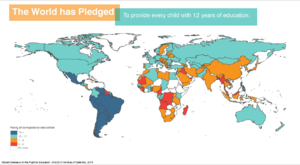
International Covenant on Economic, Social and Cultural Rights requires, within a reasonable number of years, the principle of compulsory education free of charge for all.[2]
Purpose of compulsory education
At the start of the last century, compulsory education was to master physical skills which are necessary and can be contributed to the nation. It also instilled values of ethics and social communications abilities in teenagers. Plus, it would allow immigrants to fit in the unacquainted society of a new country.[3] Nowadays, compulsory education has been considered as a right of every citizen in many countries.
It is mostly used to advance the education of all citizens, minimize the number of students who stop going to school because of family economic reasons, and balance the education differences between rural and urban areas.
The quality of compulsory education in each country depends on what political system the country has and how well developed the education system is in the country. On the other hand, in countries with a republican system of government, being educated is necessary and important for every citizen, and there are strict laws about compulsory education.[4]
History of compulsory education
Antiquity
Compulsory education was not unheard of in ancient times. However instances are generally tied to royal, religious or military organization—substantially different from modern notions of compulsory education.
Hellenic
Plato's The Republic (c. 424–c. 348 BCE) is credited with having popularized the concept of compulsory education in Western intellectual thought. Plato's rationale was straightforward. The ideal city would require ideal individuals, and ideal individuals would require an ideal education. The popularization of Plato's ideas began with the wider Renaissance and the translation of Plato's works by Marsilio Ficino (1433–1499), culminating in the Enlightenment. The Enlightenment philosopher Jean-Jacques Rousseau, known for his own work on education (including Emile, or On Education), said, 'To get a good idea of public education, read Plato's Republic. It is not a political treatise, as those who merely judge books by their title think, but it is the finest, most beautiful work on education ever written.'[5]
In Sparta boys between the age 6 and 7 left their homes and were sent to military school. School courses were harsh and have been described as a "brutal training period". Between the age of 18 and 20, Spartan males had to pass a test that consisted of fitness, military ability, and leadership skills. A student's failure meant a forfeiture of citizenship (perioidos) and political rights. Passing was a rite of passage to manhood and citizenry, in which he would continue to serve in the military and train as a soldier until the age of 60 when the soldier could retire to live with his family.[6]
Judea
Every parent in Judea since ancient times was required to teach their children at least informally. Over the centuries, as cities, towns and villages developed, a class of teachers called Rabbis evolved. According to the Talmud (tractate Bava Bathra 21a), which praises the sage Joshua ben Gamla with the institution of formal Jewish education in the 1st century AD, Ben Gamla instituted schools in every town and made formal education compulsory from age 6-8.[7]
Medieval Era
The Aztec Triple Alliance, which ruled from 1428 to 1521 in what is now central Mexico, is considered to be the first state to implement a system of universal compulsory education.[8][9]
Early Modern Era
The Protestant Reformation prompted the establishment of compulsory education for boys and girls, first in regions that are now part of Germany, and later in Europe and in the United States.
Martin Luther's seminal text An die Ratsherren aller Städte deutschen Landes (To the Councillors of all Towns in German Countries, 1524) called for establishing compulsory schooling so that all parishioners would be able to read the Bible by themselves.[10] The Protestant South-West of the Holy Roman Empire soon followed suit. In 1559, the German Duchy Württemberg established a compulsory education system for boys.[11] In 1592, the German Duchy Palatinate-Zweibrücken became the first territory in the world with compulsory education for girls and boys,[12] followed in 1598 by Strasbourg, then a free city of the Holy Roman Empire and now part of France.
In Scotland, the School Establishment Act of 1616 commanded every parish to establish a school for everyone paid for by parishioners. The Parliament of Scotland confirmed this with the Education Act of 1633 and created a local land-based tax to provide the required funding. The required majority support of parishioners, however, provided a tax evasion loophole which heralded the Education Act of 1646. The turmoil of the age meant that in 1661 there was a temporary reversion to the less compulsory 1633 position. However, in 1696 a new Act re-established the compulsory provision of a school in every parish with a system of fines, sequestration, and direct government implementation as a means of enforcement where required.
In the United States, following Luther and other Reformers, the Separatist Congregationalists who founded Plymouth Colony in 1620, obliged parents to teach their children how to read and write.[13] The Massachusetts School Laws, three legislative acts enacted in the Massachusetts Bay Colony in 1642, 1647, and 1648, are commonly regarded as the first steps toward compulsory education in the United States. The 1647 law, in particular, required every town having more than 50 families to hire a teacher, and every town of more than 100 families to establish a school.[14] The Puritan zeal for learning was reflected in the early and rapid rise of educational institutions; e.g., Harvard College was founded as early as 1636.[15]
Prussia implemented a modern compulsory education system in 1763. It was introduced by the Generallandschulreglement (General School Regulation), a decree of Frederick the Great in 1763-5.[16] The Generallandschulreglement, authored by Johann Julius Hecker, asked for all young citizens, girls and boys, to be educated from age 5 to age 13-14 and to be provided with a basic outlook on (Christian) religion, singing, reading and writing based on a regulated, state-provided curriculum of text books. The teachers, often former soldiers, were asked to cultivate silk worms to make a living besides contributions from the local citizens and municipalities.[17][18]
In Austria, Hungary and the Lands of the Bohemian Crown (Czech lands), mandatory primary education was introduced by Empress Maria Theresa in 1774.[16]
Late Modern Era
Europe
Compulsory school attendance based on the Prussian model gradually spread to other countries. It was quickly adopted by the governments in Denmark-Norway and Sweden, and also in Finland, Estonia and Latvia within the Russian Empire, but it was rejected in Russia itself.[19][20]
England and Wales
England and Wales were slow to introduce compulsory education due to the upper class defending its educational privileges.[20] In England and Wales, the Elementary Education Act 1870 paved the way for compulsory education by establishing school boards to set up schools in any places that did not have adequate provision. Attendance was made compulsory until age 10 in 1880. The Education Act of 1996 made it an obligation on parents to require children to have a full-time education from age 5 to 16. However, attendance at school itself is not compulsory: Section 7 of the Act allows for home education.
France
France was equally slow to introduce compulsory education, this time due to conflicts between the secular state and the Catholic Church,[20] and as a result between anti-clerical and Catholic political parties. The first set of Jules Ferry Laws, passed in 1881, made primary education free for girls and boys; communes and departments had the shared responsibility to fund it. In 1882, the second set of Jules Ferry Laws made education compulsory for girls and boys until the age of 13. In 1936, the upper age limit was raised to 14.[21] In 1959, it was further extended to 16.[22]
Germany
Germany's compulsory education is supported by the states of Germany. It started in 1619 and improved in the 17th century. It had a huge effect in the country and among a larger number of people than in the United States.[23]
Scotland
The Education (Scotland) Act 1872 made elementary education compulsory for the first time for all children aged between 5 and 13. The existing parish and burgh schools were taken over by the state and managed by locally elected School Boards.
United States, North America
In 1852, Massachusetts was the first U.S. state to pass a contemporary universal public education law. In particular, the Massachusetts General Court required every town to create and operate a grammar school. Fines were imposed on parents who did not send their children to school, and the government took the power to take children away from their parents and apprentice them to others if government officials decided that the parents were "unfit to have the children educated properly".[24]
In 1918, Mississippi became the last state to enact a compulsory attendance law.[25]
In 1922 an attempt was made by the voters of Oregon to enact the Oregon Compulsory Education Act, which would require all children between the ages of 8 and 16 to attend public schools, only leaving exceptions for mentally or physically unfit children, exceeding a certain living distance from a state school, or having written consent from a county superintendent to receive private instruction.[26] The law was passed by popular vote but was later ruled unconstitutional by the United States Supreme Court in Pierce v. Society of Sisters, determining that "a child is not a mere creature of the state". This case settled the dispute about whether or not private schools had the right to do business and educate within the United States.
Japan
In Japan, compulsory education was established shortly after the Meiji Restoration in 1868. Initially, it was strongly influenced by the Prussian education system. After World War II, it was rebuilt to a large extent, and the new education model is largely influenced by the American model.[27]
Travancore
In the Indian kingdom of Travancore, Queen Gowri Parvati Bayi issued a royal rescript declaring universal education and formally recognized the role of State ensure the right of education from public revenue in 1817.
China
China's nine-year compulsory education was established and considered successful. The compulsory education brings huge effects of different aspects of people's lives. The number of students became larger and the drop-out rates of students decreased in huge percent, even in the rural area. The purpose of the establishment of compulsory education in China is about “universalization”, which balances the educated differences between the towns and villages (Ding 13). On the other hand, it efficiently improves the quality of the facilities in schools because of the safety guarantee. However, nine-year compulsory education still has problems and needs to be improved. Most of the drop-out students quit schools because of the unwillingness of studies and the will which parents do not want their child to go to school which will happen only in extreme rare situation, instead of not being able to afford the tuition. Therefore, the improvements of Chinese compulsory education are still necessary in the modern society.[28]
Timeline of introduction of compulsory education
1800s
- 1805:
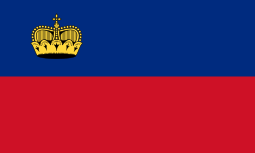
- 1814:

- 1817:

- 1834:

- 1842:

- 1844:

- 1852:

- 1857:

- 1864:
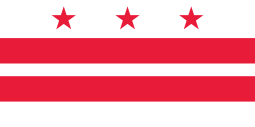

- 1867:

- 1868:
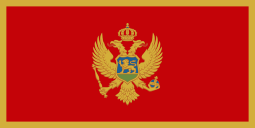
- 1869:


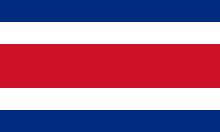
- 1870:

- 1871:

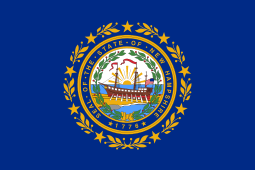

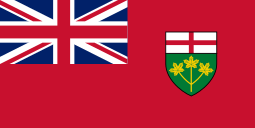

- 1872:



.svg.png)
- 1873:
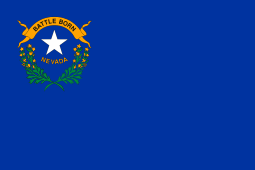

- 1874:



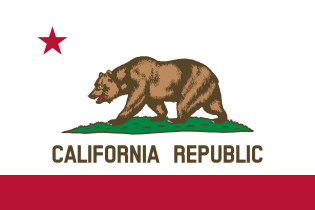
- 1875:
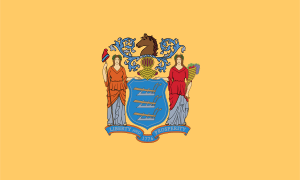


- 1876:
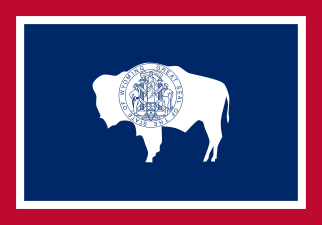
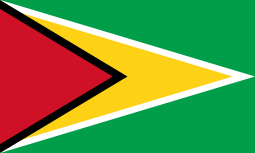

- 1877:



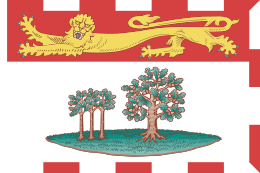
- 1878:

- 1879:

- 1880:

.svg.png)


- 1882:


- 1883:
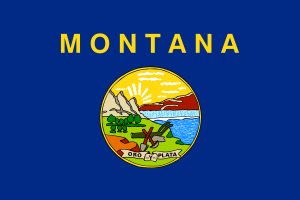





- 1884:

- 1885:

- 1886:

- 1887:
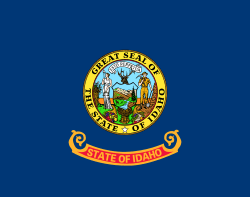

- 1889:

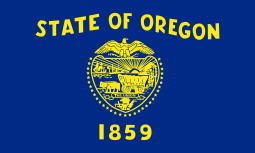

- 1890:
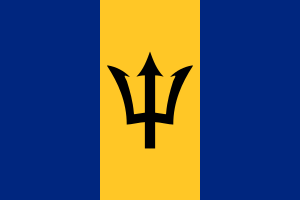

- 1891:
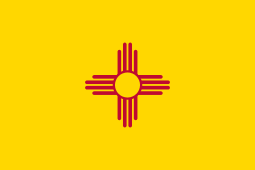
- 1892:

- 1895:

- 1896:

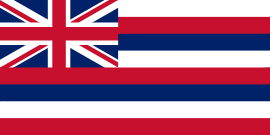
- 1897:



- 1899:
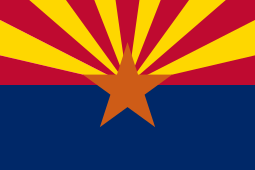
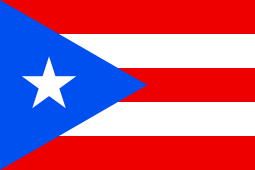
1900s
- 1900:


- 1902:


- 1904:

- 1905:


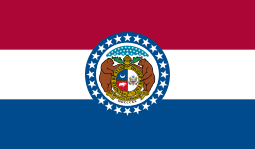

- 1906:

- 1907:


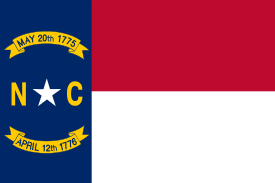

- 1908:
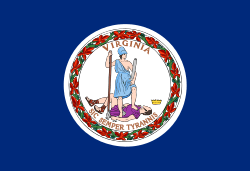
- 1909:



- 1910:


- 1912:

- 1913:

- 1915:
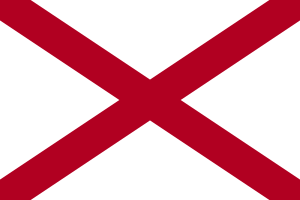

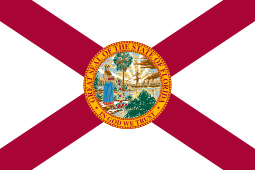
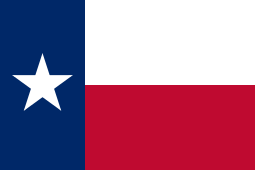
- 1916:
.svg.png)


- 1917:

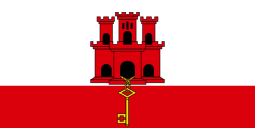
- 1918:

- 1919:
.svg.png)


- 1920:



- 1921:


- 1923:

- 1924:


- 1925:

- 1926:
.svg.png)
- 1927:

- 1929:

- 1930:


- 1935:

- 1942:

- 1943:


- 1946:

- 1949:

- 1951:

- 1952:

- 1953:


- 1956:

- 1960:

- 1961:

- 1962:


- 1963:


- 1964:

- 1965:

- 1971:

- 1973:

- 1975:

- 1976:


- 1981:


- 1982:

- 1986:

- 1988:


- 1990:



- 1991:

- 1994:

- 1996:


- 1998:


2000s
Countries without compulsory education
Per-country variations in the age range of compulsory education
The following table indicates at what ages compulsory education starts and ends, country by country. The most common age for starting compulsory education is 6, although this varies between 3 and 8.[104][105]
| Country/Region | Lower age range | Upper age range | Notes |
|---|---|---|---|
| Argentina | 4 | 18 | [106] |
| Australia | 5 | 15/17 | Upper age limit varies among states. Waived if pursuing full-time employment or full-time education. |
| Austria | 6 | 15 | Compulsory education only requires nine years spent in school. After completing all mandatory schooldays a compulsory apprenticeship is obligatory until the age of 18.[107] |
| Belgium | 6 | 18 | In Belgium, only compulsory education applies. School is not compulsory. |
| Bulgaria | 5 | 16 | Since 2012, compulsory education includes two years of preschool education before children start primary school.[108][109] |
| Brazil | 4 | 17 | Last changed in 2009.[110] |
| Canada | 6 | 16 | Except Ontario and New Brunswick: 6-18 or 6-17. Some provinces have exemptions at 14. |
| China | 6 | 15 | |
| Croatia | 6 | 15 | |
| Cyprus | 5 | 15 | Compulsory education starts with one mandatory year of pre-primary (preschool) education.[111] |
| Denmark | 6 | 16 | |
| Egypt | 6 | 14 | |
| England and Wales | 4[112] | 16[113] | Requirement is for a full-time education, but attendance at a school is not compulsory (section 7 of The Education Act 1996). |
| Estonia | 6/7 | 15/16 | 6 year olds can enter if they turn 7 by 1 October in the same year.[114] |
| Finland | 7 | 15 | Beginning age is negotiable ± 1 year. Ends after graduation from comprehensive school, or at least 9 years. |
| France | 3 | 16 | Compulsory education only |
| Germany | 6 | 16 | Varies slightly between states.[115][116] |
| Greece | 5 | 15 | Compulsory education starts with one mandatory year of pre-primary (preschool) education. |
| Haiti | 6 | 11 | The Haitian Constitution mandates that education be free of charge. However, even public schools charge substantial fees. 80% of children go to private schools. |
| Hong Kong | 6 | 17 | Hong Kong laws state that education is free for 12 years except for private schools or subsidized schools. |
| Hungary | 3 | 16 | Since 2015, kindergarten is compulsory from age 3, although exceptions are made for developmental reasons.[117][118] |
| India | 6 | 14 | The Right of Children to Free and Compulsory Education Act in August 2009 made education free and compulsory for children aged between 6 and 14. |
| Indonesia | 7 | 16 | |
| Israel | 3 | 18 | Compulsory education takes place from kindergarten through to 12th grade. |
| Iran | 6 | 12[119] | |
| Italy | 6 | 16 | |
| Jamaica | 5 | 16 | Parents could face charges of Child Neglect if they prevent their children from going to school without valid reasons. Not enforced. |
| Japan | 6 | 15 | |
| Latvia | 5 | 16[104][120] | |
| Luxembourg | 4 | 16 [104] | |
| Malaysia | 6 | 12[121] | |
| Maldives | 6 | 15 | |
| Mexico | 6 | 18 | Schooling is required through upper secondary school (Preparatoria).[122] |
| Morocco | 6 | 15 | |
| Netherlands | 5 | 18 | Students are allowed to leave early after obtaining their 'start qualification' (MBO level 2, HAVO or VWO degree). |
| New Zealand | 6 | 16 | Children typically commence school at five years. There is no direct cost until the age of 19.[123] |
| Norway | 6 | 15 | A total of ten years (of study, and not schooling, as suggested here), where Primary school is year 1-7 (without grades), and Lower Secondary school (with grades) is year 8-10.[124] |
| Philippines | 4-6 | 18 | This was modified from 6-16 due to the addition of compulsory kindergarten and senior high school. |
| Poland | 6 | 18 | Polish law distinguishes between compulsory school (obowiązek szkolny) and compulsory education (obowiązek nauki). |
| Portugal | 6 | 18 | It is the law that children living in Portugal (if there for 4 months or more) must go to school. Home schooling is available with registration at a school and quarterly examinations in the Portuguese curriculum only. |
| Russia | 6 | 17 | Student may leave after age 15 with the approval of parents and the local authority.[125] |
| Scotland | 5 | 16 | A person is of school age if he has attained the age of five years and has not attained the age of sixteen years.[126] |
| Slovenia | 6 | 15 | |
| Singapore | 7 | 15[127] | Compulsory Education Act 2000. Children who are homeschooled may be exempted from the Act. From 2019, children with moderate-to-severe special education needs are no longer exempt from the Act (children with mild special education needs were already covered by the Act).[128] |
| Spain | 6 | 16 | |
| Syria | 6 | 15 | Typical ages for 9 years of compulsory education from grade 1 to grade 9. |
| Sweden | 6 | 16[129] | |
| Switzerland | 4-6 | 15 | Varies by canton.[104] |
| Taiwan | 7 | 18 | Typical ages for 9 years (6-15) of compulsory education (starting from 1968) and optional extend to age 18 (non compulsory, starting from 2014). |
| Thailand | 4 | 15 | Only compulsory education applies. School is not compulsory in Thailand. |
| Turkey | 6 | 18 | From the 1st to the 12th grade, education is compulsory. Starting in the educational year of 2012-2013, an education reform took effect to bring the compulsory education up to the end of high school. The system is commonly referred to as 4+4+4. |
| United States | 5-8 | 15-18 | Ages vary between states. Beginning age varies 5-8, ending age varies 15-18.[130] In Wisconsin v. Yoder, the Supreme Court determined in 1972 that Amish children could not be placed under compulsory education laws past the 8th grade. |
| Uruguay | 6 | 14 | |
| Zimbabwe | 6 | 16 | Typical ages for 11 years of compulsory education. |
Number of pupils and students enrolled in compulsory education
Due to population growth and the proliferation of compulsory education, UNESCO calculated in 2006 that over the subsequent 30 years, more people would receive formal education than in all prior human history.[131]
Criticism
Critics of compulsory education argue that such education violates the freedom of children, is a method of political control, is ineffective at teaching children how to deal with the real world, and has negative effects on children leading to higher rates of apathy, bullying, stress, and depression.
See also
- History of education
- Public education
- Public school (government funded)
- Child Labor
- Unschooling
- Anti-schooling activism
- Raising of school leaving age
- Democratic education
References
- "Compulsory Education". New England Journal of Education. 1 (5): 52. 1875. JSTOR 44763565.
- International Covenant on Economic, Social and Cultural Rights, Article 14
- Niece, Richard (1983). "Compulsory Education: Milestone or Millstone?". The High School Journal. 67 (1). p. 33. JSTOR 40365328.
- Camp, David N (1871). "Compulsory Education". The Connecticut School Journal. 1 (5): 181–184. JSTOR 44649076.
- http://classics.mit.edu/Plato/republic.html
- Wikipedia: Agoge
- Wikipedia: Jewish education#Primary schooling
- Jacques Soustelle (11 November 2002). Daily life of the Aztecs: on the eve of the Spanish Conquest. Courier Dover Publications. p. 173. ISBN 978-0-486-42485-9. Retrieved 27 November 2012.
- Wikipedia: Aztec#Education
- Luther deutsch, p. 70, at Google Books
- "Große Kirchenordnung", 1559, Oliver Geister, Die Ordnung der Schule. Zur Grundlegung einer Kritik am verwalteten Unterricht. Münster 2006, p. 145.
- Emil Sehling (ed.), Die evangelischen Kirchenordnungen des 16. Jahrhunderts. Vol 18: Rheinland-Pfalz I. Tübingen 2006, p. 406.
- John Demos (1970), A Little Commonwealth: Family Life in Plymouth Colony. Oxford University Press, New York, N.Y., pp. 104, 142-144
- See references in articles Massachusetts School Laws and Massachusetts#Education.
- Clifton E. Olmstead (1960), History of Religion in the United States. Englewood Cliffs, N.J, pp. 79-80
- James van Horn Melton. "Absolutism and the Eighteenth-Century Origins of Compulsory Schooling in Prussia and Austria". p. xiv.
- 250 Jahre Volksschule in Preußen, Lesen, Schreiben und Beten (250 years of primary education in Prussia) 12.08.2013 Tagesspiegel Berlin, Barbara Kerbel, in German
- Funding and training of the teachers was slowly expanded and received funding till teachers gained full academic status in the 20th century.
- Cubberley, 1920
- Soysal, Yasemin Nuhoglu; Strang, David (1989). "Construction of the First Mass Education Systems in Nineteenth-Century Europe". Sociology of Education. 62 (4): 277–288. doi:10.2307/2112831. JSTOR 2112831.
- Law of August 9, 1936.
- Ordonnance of January 6, 1959.
- Neufeld, John (October 1963). "Compulsory Education in Germany". ALA Bulletin. 57 (9): 805. JSTOR 25696774.
- Rothbard, Murray Rothbard. "The Puritans 'Purify': Theocracy in Massachusetts". Conceived in Liberty. Arlington House Publishers.
- Katz, Michael S. "A History of Compulsory Education Laws" (PDF). ERIC - Institute of Education Sciences. ERIC. Retrieved 19 December 2014.
- Jorgenson, Lloyd P. (1968). "The Oregon School Law of 1922: Passage and Sequel". The Catholic Historical Review. Catholic University of America Press. 54 (3): 455–466. JSTOR 25018244.
- See Wikipedia article Education in Japan.
- Ding, Yanqing (2012). "The Problems with Access to Compulsory Education in China and the Effects of the Policy of Direct Subsidies to Students". Chinese Education & Society. Chinese Education & Society vol.45, no.1. 45: 13–21. doi:10.2753/CED1061-1932450102.
- Reeh, Niels. 2016. Secularization Revisited - Teaching of Religion and the State of Denmark 1721 to 2006. Edited by Lori Beamann, Lene Kühle and Anna Halahoff: Springer.
- Grinin, Leonid E.; Ilyin, Ilya V.; Herrmann, Peter; Korotayev, Andrey V. (2016). Globalistics and globalization studies: Global Transformations and Global Future. p. 66. ISBN 978-5705750269.
- School system
- based on the text in the previous section
- State Compulsory School Attendance Laws
- Education in Spain: Close-up of Its History in the 20th Century
- 100 Years of Educational Reforms in Europe: a contextual database
- COSTA RICA'S EDUCATION SYSTEM
- Aubry, Carla; Geiss, Michael; Magyar-Haas, Veronika; Oelkers, Jürgen (2014). Education and the State: International perspectives on a changing relationship. pp. 47–8. ISBN 9781317678236.
- Philip Oreopoulos: Canadian Compulsory School Laws and their Impact on Educational, 2005
- Free, compulsory and secular Education Acts
- Guyana
- The status of Dutch in post-colonial Suriname
- Education in Wisconsin
- Sanchez, George I. (1963), The Development of Education in Venezuela, Office of Education (DHEW), Washington, DC., p. v
- Serbia
- Norway
- Historical developments of education in Barbados
- George Leland Dyer: Order No. 80, 1904
- "Education in Namibia" (PDF). p. 45.
- Iceland: Education
- Development of Education during the Years 1944 - 1948 in Albania
- Constitution of Mexico
- Edward G. Archer: Gibraltar, Identity and Empire
- Dz.Pr.P.P. 1919/14/147
- Educational Policies: Estonia (2014)
- Swaziland – History & Background
- Finland: Evolution of Educational Provision
- The Development of Primary Education in Thailand and Its Present Challenges
- Rapatahana, Vaughan; Bunce, Pauline (2012). English Language as Hydra: Its Impacts on Non-English Language Cultures. Multilingual Matters. pp. 27–28. ISBN 978-1-84769-752-3.
- General View of Teacher Education Policies of Turkey
- "Всеобщее обучение". otrok.ru (in Russian). Retrieved 2019-05-01.
- Literacy country study: Mongolia
- "History of educational system in Afghanistan". Help the Afghan Children. 12 May 2003. Retrieved 2019-05-01.
- Encyclopædia Iranica: General Survey of Modern Education
- "History of the University". University of Malta. Archived from the original on June 30, 2011. Retrieved February 2, 2011.
- Constitution of Libya (1951)
- Constitution of Jordan
- Education in Egypt's development: the need for a wider system of appraisal
- Historical Review of Korea's Education
- Education Act, 1961
- THE EDUCATIONAL SYSTEM IN CYPRUS
- Algeria
- Diyen, Hayat 2004,"reform of secondary education in Morocco: Challenges and Prospects." Prospects, vol XXXIV.no.2, pp212
- A History of Education in the United Arab Emirates and Trucial Sheikdoms
- Indonesia
- Somalia - Education
- Compulsory Education Law No. 118 of 1976
- Nigeria
- A country study: Seychelles
- Increasing The School Access in Azaz City, Syria: A GIS-Based Set Covering Model
- Education in Taiwan
- Compulsory Education Law of the People’s Republic of China, 1986
- Republic Act No. 6655, Chan Robles Law Library.
- Compulsory Primary Education Act, 1990
- Education in the Maghreb: Tunisia
- Samoa
- World Data on Education: Laos
- Children’s Rights: Lebanon
- World Data on Education: Sudan
- Compulsory education Act is passed, 2000
- Mauritania
- World Bank: Education in Liberia
- National Education System
- Sierra Leone: Newsline
- Law No. 27 of 2005 with respect to Education.
- Compulsory Education Act (Cap. 211)
- Education Act, 2008
- The Obstacles Facing Students in Lesotho
- Mahmood Ansari: The State and Education System in Bhutan A Note
- Education System in Oman
- Education System in Papua New Guinea
- Education System in Solomon Islands
- https://webgate.ec.europa.eu/fpfis/mwikis/eurydice/images/2/24/Compulsory_Education_in_Europe_2016_2017.pdf
- https://nces.ed.gov/programs/digest/d08/tables/dt08_165.asp
- http://www.derechofacil.gob.ar/leysimple/ley-nacional-de-educacion/
- https://www.help.gv.at/Portal.Node/hlpd/public/content/194/Seite.1940281.html
- "LITERACY IN BULGARIA : COUNTRY REPORT SHORT VERSION" (PDF). Eli-net.eu. Retrieved 2017-08-29.
- "Compulsory Education in Europe : 2016/17" (PDF). Webgate.ec.europa.eu. Retrieved 2017-08-29.
- http://www.planalto.gov.br/ccivil_03/constituicao/emendas/emc/emc59.htm
- http://www.highereducation.ac.cy/en/educational-system.html
- "Education Act 1996 s8". Retrieved 6 October 2016.
- "Education leaving age". Politics.co.uk. Retrieved 15 May 2013.
- "Põhikooli- ja gümnaasiumiseadus" [Primary and Secondary School Act]. Riigi Teataja (in Estonian). June 21, 2010. Retrieved May 17, 2018.
- de:Schulpflicht#Heutige Rechtslage
- "Where home schooling is illegal". BBC News. March 22, 2010.
- http://unesdoc.unesco.org/images/0022/002299/229933E.pdf
- Hungary lowers mandatory school age to three Archived 2013-12-02 at the Wayback Machine
- "نگرش مردم ایران به تحصیل زنان در دانشگاه منفی تر شده است". BBC Farsi.
- "Archived copy". Archived from the original on 2019-08-31. Retrieved 2017-03-26.CS1 maint: archived copy as title (link)
- "Pelaksanaan pendidikan wajib di peringkat rendah 2003" (PDF). Archived from the original (PDF) on 2014-10-14. Retrieved 2014-03-11.
- Laura Casillas. "Calderón firma decreto de preparatoria obligatoria". Azteca Noticias. Archived from the original on 14 February 2012. Retrieved 8 February 2012.
- "Education in New Zealand". Ministry of Education. Retrieved 19 November 2018.
- "About Education in Norway" (PDF). udir.no. Foreign Ministry of Norway. Archived from the original (PDF) on 27 March 2016. Retrieved 14 July 2016.
- Federal law of Russia "On education", article 19.6
- "Education (Scotland) Act 1980 - 31 School age".
- "COMPULSORY EDUCATION ACT (CHAPTER 51)". Singapore Statutes Online.
- "Compulsory Education". moe.gov.sg. Retrieved 2019-02-25.
- Hans Högman. "Den svenska skolans historia" (in Swedish). Hasses hemsida. Retrieved 6 September 2014.
- Age range for compulsory school attendance and special education services, and policies on year-round schools and kindergarten programs.. Retrieved 28 November 2009.
- Schools Kill Creativity. TED Talks, 2006, Monterey, CA, USA.
Further reading
- Coleman, J. S., et al. (1966). Equality of Educational Opportunity. Washington: U.S. Government Printing Office.
- Dunlap, Knight (1929). "Is Compulsory Education Justified?," The American Mercury, pp. 211–214.
- Epstein, R. (2007). Let's abolish high school. Education Week. Retrieved April 18, 2007, from http://www.edweek.org/ew/articles/2007/04/04/31epstein.h26.html
- Gardner, Richard (1871). . Tonbridge: Richard Gardner.
- Holt, J. (1974). Escape from childhood. In Noll, J.W. (Ed.), Taking Sides: Clashing Views on Educational Issues (pp. 25–29). Dubuque, IA: McGraw-Hill.
- Illich, I. (1970). Deschooling Society. New York: Harper & Row.
- Rothbard, M. (1978). Public and compulsory schooling. In For a New Liberty (chap. 7). Retrieved April 12, 2007, from https://www.mises.org/rothbard/newliberty6.asp
- Van Horn Melton, J. (1988). Absolutism and the Eighteenth-Century Origins of Compulsory Schooling in Prussia and Austria Cambridge: Cambridge University Press.
- West, E. G. (1974). The economics of compulsion. In The Twelve-Year Sentence. Retrieved April 11, 2007, from https://web.archive.org/web/20070711172616/http://www.ncl.ac.uk/egwest/pdfs/economics%20of%20compulsion.pdf
- White, John (1876). "The Laws on Compulsory Education," The Fortnightly Review, Vol. XXV, pp. 897–918
External links
| Wikiquote has quotations related to: Compulsory education |
| Wikisource has the text of a 1920 Encyclopedia Americana article about Compulsory education. |